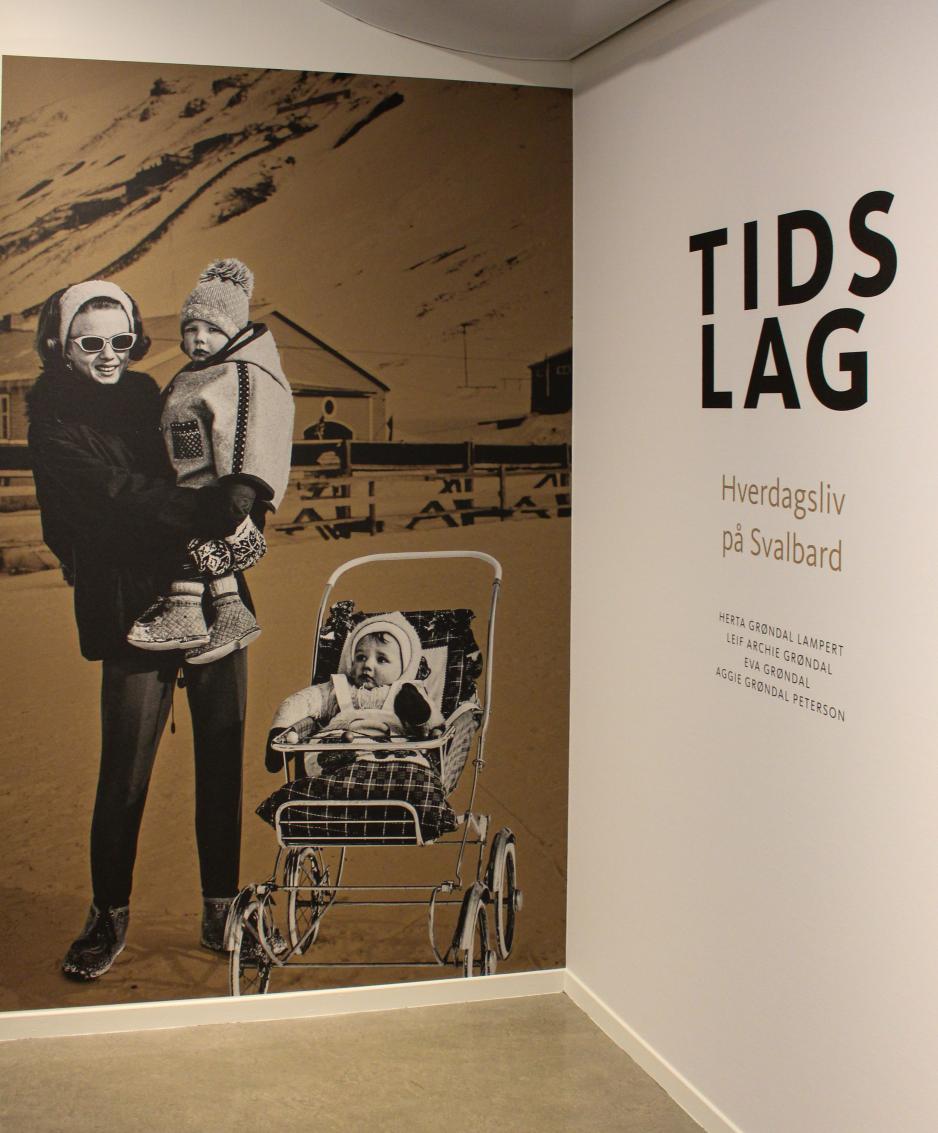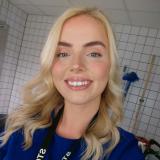The Arctic Scientist Profiles: “Before You Can Act, You Must Feel”
Henning Howlid Wærp is a literature researcher, critic, and author. During the Arctic Frontiers 2025 conference, he participated in a panel discussion about the female perspective in polar regions at Nordnorsk Kunstmuseum in Tromsø, Northern Norway. (Photo: Birgitte Annie Hansen)
Tromsø, Northern Norway (High North News): In an Arctic landscape increasingly characterized by geopolitics, security, and climate, literature can be the key to expanding the room for action and engaging more people, believes literature researcher Henning Howlid Wærp at UiT The Arctic University of Norway. "Before you can act, you must feel," the researcher tells HNN.
Henning Howlid Wærp is a professor of Nordic literature at UiT, the Arctic University of Norway, who has elevated the literature perspective in the High North research.
HNN met Wærp during the Arctic Frontiers conference in Tromsø. He participated in a panel discussion about the female perspective in polar regions, connected to the exhibition Layers of Time—Everyday Life in Svalbard.
The exhibition can be experienced at Nordnorsk Kunstmuseum [the Northern Norwegian Art Museum, ed. translation] from January 25th to October 5th and depicts three generations' everyday life in Svalbard from the 50s throughout the 90s. The panel discussion was one of few events focusing on culture during the Arctic conference.
Like the exhibition, Wærp has strived to expand the image of the North and the Arctic in his polar literature research. Because how has literature affected how we look at the North today and the people who live there? And what role can it play in today's climate?
Wærp is originally from Kongsberg but traveled north to Tromsø looking for an education position and greater opportunities, perhaps in contrast to the impression many have of the North.
"You can go northward and get positions you perhaps wouldn't in the south due to greater competition. There are more opportunities in the North and a greater rotation of people, for better or worse."

The Layers of Time exhibition can be experienced at Nordnorsk Kunstmuseum in Tromsø, Northern Norway, from January 25th to October 5th. The exhibition showcases everyday life in Svalbard through the female lens and contrasts the often strict and masculine portrayal of the Arctic.
The power of language
When Wærp left Oslo, where he earned his doctorate, his colleagues gave him Knut Hamsun's collected works as a farewell present. They told him that if he was going to Northern Norway, he had to know Hamsun. And they were right; people were interested in Hamsun in the North, but he also discovered a great interest in polar literature, particularly travel literature.
However, Wærp read the literature differently.
"Polar literature is often used as pure academic sources. I could ask historians if they had read Otto Sverdrup's two-volume work Nyt Land, and they would reply that they had read some of it. For a literary scholar, that is not a valid answer," says Wærp.
Wærp and other literature researchers received funds to explore the Arctic literature in 2006, the same year the Norwegian government launched its High North strategy.
"The High North research lacked a literature perspective," Wærp explains.
Arctic discourses, or the prevailing narratives, often support symbolic power structures and often seep into political rhetoric and polar policy. In his book Arctic Literature, the researcher asks, "What stories are to be told?"
Travel literature
Two Norwegian giants of polar literature, Fridtjof Nansen and Roald Amundsen, are among those often considered pure academic sources on the North. Yet, the power of language is clearly illustrated through them.
Wærp explains that Nansen succeeds to a higher degree than Amundsen due to his literary skills. He also weaves in other literature to show that he is well-read and that his writing belongs to a world of writing.
"Thus, he can appeal to a wider audience of well-read readers while simultaneously having a simplicity that appeals to others."
"Amundsen, however, does not have the same language power, even though he is just as great a polar hero."
And the consequences are clear: Nansen has had a considerably greater dissemination than his Antarctic counterpart and has had a more significant influence on polar literature.
Literature boils statistics down to human stories.
What is the North?
Literature has had and still has significant power to define. Yet, the image of the North is a divided one.
"Literature considers the North from both an outsider and insider perspective. It is part of setting the identity for those who live here. It is partly affected by what we would like to be, but also by how others perceive us."
The literary scholar points to a long historic line depicting the Arctic in accord with the region's light and darkness.
"It is a divided image. The Arctic is the land of freedom, possibilities, and self-development. It contains the pure, innocent, and beautiful."
Conversely, the Arctic is a dark place, home to dangerous and uncontrollable forces. It is the land of barbarians.
The same dichotomies also follow the Indigenous peoples of the North, Wærp explains.
"These ideas are incredibly old. You can see writers alternating between them in one and the same book."
The land of contrasts
Great writers have felt the pull toward the North for centuries. The Arctic region has represented the sublime, pure, light, health, and the search for knowledge. But dark dangers and supernatural creatures, as well as human downfalls, are also part of the region's image.
Still, the stories of the divided Arctic persist. The researcher believes that literature needs these diverse images.
"The more images you have, the stronger you stand in ideas about how to live and design policies. It is important for the cliches to be supplemented with more diverse images of the Arctic," explains Wærp.
He believes literature can be essential to addressing the more modern challenges faced by the Arctic, such as climate change.
"Literature boils statistics down to human stories," he says.
There is enough knowledge. Now, greater sensitivity to the climate threat is needed. He believes that a shift in attitude is required in order to change the nature management in the North. This is where literature comes to fruition.
"Feelings come before action. This is where literature comes into the picture – it can awaken feelings, interest, and engagement in a different way than scientific results can."
The panel discussion Women's Perspectives in Polar Regions took place at Nordnorsk Kunstmuseum after a guided tour of the exhibition Layers of Time showcasing photos by Herta and Eva Grøndal. From the left: Charis Gullickson, curator and project manager for the exhibition Layers of Time; Henning Howlid Wærp, professor of Nordic literature at UiT; Marit Anne Hauan, cultural scientist and general manager at the Polar Museum in Tromsø; Harald Dag Jølle, historian at the Norwegian Polar Institute and moderator Marthe Tolnes Fjellestad, curator at Perspektivet Museum. (Photo: Birgitte Annie Hansen)
From periphery to center
The literary scholar has felt the effect of what language one uses about the North himself – from periphery to center, from Northern Norway to the Arctic.
"When I went northward in 1996, people felt sorry for me. They thought I would serve my time here and then return southward as soon as a position opened up," says Wærp, adding:
"But something happened with the implementation of the High North strategy and the introduction of the Arctic term. Suddenly, I was no longer in man's land but in the center of something, and the people in the south wanted to come here."
"When you thought in terms of the North, we were far away. But using the term the Arctic, we suddenly find ourselves in the center. This has been a noticeable cognitive shift."
Further reading
And if our readers are looking for recommendations from the literature researcher, he can recommend these books for a proper and nuanced portrayal of the North:
- Anka Ryall: Polare kvinner. Norsk polarhistorie i kjønnsperspektiv (Orkana 2022)
- Marit Anne Hauan: Polare maskuliniteter. Fra oppdagelsen av Svalbard til heltetidas siste time (Orkana 2021)
- Sherill Grace: Canada and the Idea of the North (McGill 2007)
- Heidi Hansson, Maria Lindgren Leavenworth og Anka Ryall: The Arctic in Literature for Children and Young Adults (Routledge 2020)
- Johan Schimanski, Cathrine Theodorsen og Henning Howlid Wærp (red.): Reiser og ekspedisjoner i det litterære Arktis

